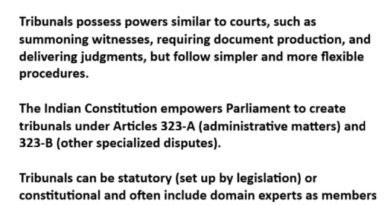Rat Hole Mining
Rat hole mining is a method of coal extraction that is predominantly practiced in the northeastern states of India, particularly in Meghalaya and Assam. This informal and often illegal mining technique involves digging small, narrow tunnels or “rat holes” to access coal seams. While it provides livelihoods for many local communities, it poses significant risks to both miners and the environment.
The rat-hole mining tragedy in Assam’s Dima Hasao district occurred on May 30, 2022, and involved a catastrophic incident where a group of miners were trapped underground due to a sudden collapse of a rat-hole mine. This tragedy highlighted the ongoing dangers associated with unregulated mining practices in the region.
Key Details of the Tragedy
– Incident Overview: The tragedy unfolded when heavy rainfall led to the flooding of a coal mine, causing the walls of the rat-hole mine to collapse. Several miners were trapped inside, leading to a desperate rescue operation.
– Casualties: Reports indicated that at least six miners were confirmed dead, while others remained missing. Rescue teams faced significant challenges due to the unstable conditions within the mine and ongoing adverse weather.
Contents
Characteristics of Rat Hole Mining

– Tunneling Technique: Miners dig vertical shafts and then create horizontal tunnels to reach coal deposits. The tunnels are typically very small, allowing only one or two miners to work at a time.
– Labor Intensive: This method relies heavily on manual labor, with workers often using basic tools like pickaxes and shovels. Due to the confined spaces, working conditions can be extremely hazardous.
– Lack of Regulation: Rat hole mining is largely unregulated, leading to unsafe practices and significant environmental degradation. The absence of proper oversight means that safety measures are often ignored, resulting in accidents and health risks for miners.
Environmental Impact
– Deforestation and Land Degradation: The mining process leads to deforestation and the destruction of local ecosystems. The removal of vegetation can cause soil erosion and disrupt local water systems.
– Water Pollution: The runoff from mining sites can contaminate nearby rivers and streams with heavy metals and other pollutants, adversely affecting aquatic life and local communities that rely on these water sources.
– Air Quality Issues: Dust and particulate matter generated during mining operations can degrade air quality, posing health risks to both miners and surrounding populations.
Legal Status
In 2014, the National Green Tribunal (NGT) of India banned rat hole mining in Meghalaya due to its detrimental environmental impacts. However, enforcement of this ban has been challenging, with illegal mining activities continuing despite the regulations.
Socioeconomic Aspects
– Livelihoods: For many local communities, rat hole mining has been a source of income. However, the lack of safety measures means that miners face significant risks, including accidents and long-term health issues due to exposure to coal dust.
– Community Conflicts: The practice has led to conflicts between local communities advocating for environmental protection and those relying on coal mining for their livelihoods.
Recent news regarding rat hole mining in Assam/Meghalaya highlights ongoing challenges and developments in the region:
1. Supreme Court Ruling: On January 18, 2023, the Supreme Court of India upheld the ban on rat hole mining in Meghalaya. This decision reinforced the National Green Tribunal’s (NGT) earlier ruling aimed at protecting the environment and addressing safety concerns associated with this mining method. The court emphasized the need for sustainable practices and adherence to environmental regulations.
2. Environmental Concerns: Reports have surfaced about illegal rat hole mining activities continuing despite the ban. Activists and environmental organizations have raised alarms about the environmental degradation caused by these operations, including deforestation, soil erosion, and water pollution. The government has been urged to take stricter enforcement measures to curb illegal mining.
3. Community Impact: Local communities dependent on rat hole mining for their livelihoods are facing economic challenges due to the ongoing ban. There have been calls for alternative employment opportunities and sustainable development initiatives to support these communities while transitioning away from environmentally harmful practices.
4. Government Initiatives: The Meghalaya government has been working on strategies to regulate coal mining more effectively and promote sustainable practices. Discussions are ongoing about implementing new policies that balance economic needs with environmental protection.
These developments underscore the complexities surrounding rat hole mining in Meghalaya, as stakeholders seek solutions that address both economic and environmental concerns.
The Burrow Tragedy
The Burrow Tragedy refers to a catastrophic incident that occurred on February 15, 2023, in the town of Burrow, located in the state of New York. This tragic event involved a massive explosion at a local chemical plant, resulting in significant loss of life and extensive damage to the surrounding area.
Key Details of the Burrow Tragedy:
– Explosion: The incident began with a large explosion at the Burrow Chemical Plant, which was known for manufacturing various industrial chemicals. Eyewitnesses reported hearing a loud blast that shook buildings several miles away.
– Casualties: The explosion resulted in the deaths of at least 15 workers, with many others suffering serious injuries. Emergency services responded quickly, but the scale of the explosion made rescue efforts challenging.
– Evacuations and Safety Concerns: Following the explosion, authorities evacuated nearby neighborhoods due to concerns about toxic fumes and potential secondary explosions. Residents were advised to stay indoors and avoid the area.
– Investigation: An investigation was launched to determine the cause of the explosion. Initial reports suggested that safety protocols may not have been adequately followed, leading to hazardous conditions at the plant.
– Community Impact: The tragedy deeply affected the local community, prompting discussions about workplace safety regulations and emergency preparedness. Memorial services were held for the victims, and support was offered to affected families.
Aftermath
In the wake of the tragedy, there were calls for stricter safety regulations in chemical manufacturing industries across New York State. The incident highlighted ongoing concerns regarding industrial safety standards and the need for improved oversight to prevent similar tragedies in the future.
This tragic event serves as a reminder of the potential dangers associated with chemical manufacturing and has led to renewed efforts to enhance safety measures in such facilities.
Source: Deccan Herald
Discover more from Simplified UPSC
Subscribe to get the latest posts sent to your email.

